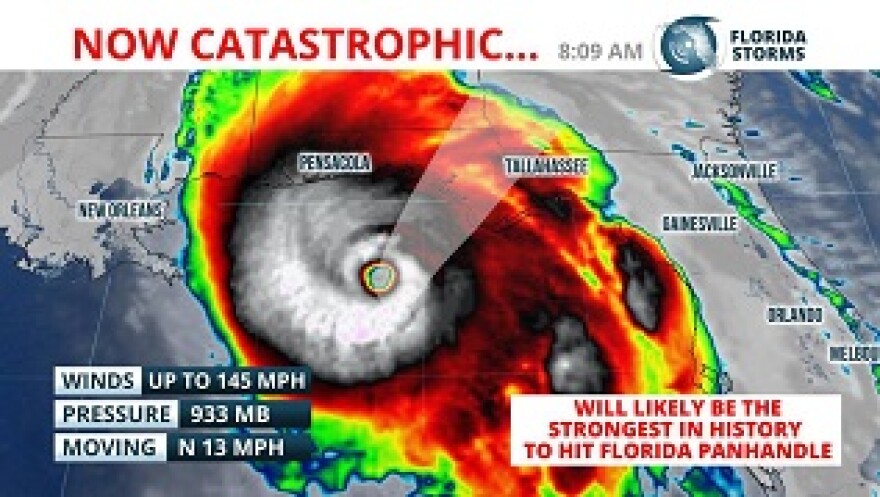Two recent studies outlining the progression of climate change have some of Florida’s leaders on the subject calling for greater legislative action. Those studies are the United Nations’ Emissions Gap Report and the U.S. Government’s National Climate Assessment.
Much of the world is grappling with solutions to global changes in climate patterns. And one of the National Climate Assessment’s authors says Florida and its surrounding states are particularly susceptible.
Kirsten Dow, a professor at the University of South Carolina, contributed to the study’s chapter on the Southeast.
“Many of the southeast cities are particularly vulnerable because of expected impacts to infrastructure in urban areas, and to health,” Dow said during a review of her findings hosted by the Southern Alliance for Clean Energy. In it, she outlined some observable indicators of a changing climate in Floridians’ backyard.
“Further evidence that climate change is already occurring – in looking the historical change in the length of the freeze-free season,” Dow said. “Now this season has grown by about 10 or 12 days since the 1980s, consistently across the Southeast.”
The expanding number of days without a freeze can affect the way farmers grow food, according to Dow.
“This is important because it has implications for agriculture. Many of our key crops, blueberries, peaches and others, need a certain period of chilling days that they may not get,” Dow said. “It’s also important for the potential of pests to find new habitats.”
When thinking about climate change, it’s not always the days that indicate a shift in patterns.
“The really important signal for human health has been that the number of nights above 75 degrees Fahrenheit, those nighttime hours that we depend to cool our houses if we don’t have a lot of air conditioning, and to cool the outdoors if we’re going to plan our work to start early in the morning, have increased substantially,” Dow said.
When it comes to increasing hurricane strength – something Floridians have felt the brunt of in recent years – another of the Southeast chapter’s authors says two factors feed into that. Doug Marcy is a Coastal Hazards Specialist for the National Oceanic and Atmospheric Administration.
“We think that’s due to two factors that for the most part led to the formation and strength of Irma: Warm waters to greater depths, over the hurricane formation areas and the areas where they pass through on their way to potentially hit the U.S. Lighter winds in the upper atmosphere as well led to that,” Marcy said. “So, these high-intensity hurricanes are expected to be not necessarily more frequent, but definitely expected to be more intense.”
So, what’s at stake for the Sunshine State? A lot, according to outgoing Democratic U.S. Senator Bill Nelson. He addressed the issue from the Senate Floor this week.
“Climate Change is expected to make South Florida more vulnerable to diseases like the Zika virus. Florida could see more than $346 billion dollars in property value to be lost over the course of this century,” Nelson said.
Nelson says the changing climate will make the environment friendlier to harmful algae blooms, something that’s constantly been in the news throughout the year.
Legislative advocacy group Florida Conservation Voters is reaching out to new leaders in the State Capitol.
“The reason we wrote the letter and called upon Speaker Oliva and President Galvano to actually set up a select committee on climate change is because our state is already feeling those impacts,” the group’s director, Aliki Moncrief, said. “And when it comes to policies to address those impacts, we’re kind of at the bottom of the pile compared to a lot of other states and countries.”
Moncrief says the state’s new Commissioner of Agriculture Nikki Fried stands to make a big impact. She says Fried can take the lead on things like protecting lands, providing urban forestry grants to communities and heading up the State Office of Energy.
“She’s going to be looking at these issues with fresh eyes, and she’s not beholden to some of the special interests I think that have captivated Cabinet positions before,” Moncrief said.
While the Southeast may be more vulnerable to a changing climate, Professor Kirsten Dow says there are some positives on the horizon.
“While those are concerns, there’s also opportunities. Many of the Southeast Cities are among the fastest-growing in the country,” Dow said. “That growth is an opportunity to do more effective design, improve our urban design and reduce greenhouse gas emissions to prevent these further impacts of climate change.”




